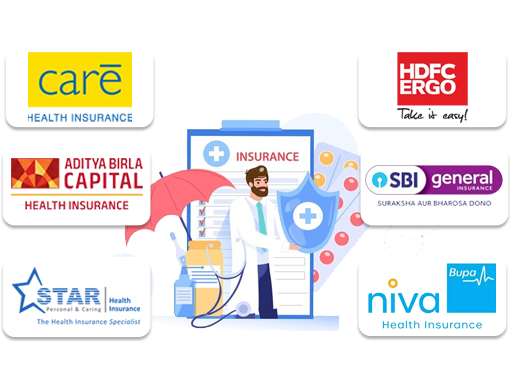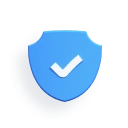Rashtriya Swasthya Bima Yojana




Simran is an insurance expert with more than 4 years of experience in the industry. An expert with previous experience in BFSI, Ed-tech, and insurance, she proactively helps her readers stay on par with all the latest Insurance industry developments.
Reviewed By:

Raj Kumar has more than a decade of experience in driving product knowledge and sales in the health insurance sector. His data-focused approach towards business planning, manpower management, and strategic decision-making has elevated insurance awareness within and beyond our organisation.
Updated on Jul 09, 2025 4 min read
Rashtriya Swasthya Bima Yojana (RSBY)
Rashtriya Swasthya Bima Yojana was introduced in the year 2008 by the Ministry of Labor and Employment for unorganized workers in the country. The idea is to provide families below the line of poverty with the best healthcare services and social security.
The scheme is designed to help below poverty line families get access to the best medical facilities in town to rule of health hazards in regards to old age, maternity, disability and general ailments. The RSBY scheme was later expanded to make these benefits available to unorganized workers who are marginally above the poverty line.
Eligibility Criteria to Enroll for Rashtriya Swasthya Bima Yojana
Enrolment under the Rashtriya Swasthya Bima Yojana is possible only if the applicant meets each of the following criteria:
- The applicant must be working for an unorganized sector which is a part of below the poverty line households. The applicant must be included in the district BPL list.
- Applicants marginally above the poverty line can also apply for RSBY coverage. People registered under welfare boards are also eligible to apply.
Features of Rashtriya Swasthya Bima Yojana
Listed below are some of the highlighting features of the Rashtriya Swasthya Bima Yojana:
- Unorganized workers are eligible to get coverage up to Rs. 30,000 expense related to hospitalization.
- The charges for the premium are paid by the Central Government and by the respective State Government.
- There is no age limit for coverage under this scheme.
- The beneficiaries of this coverage must pay Rs. 30 for registration.
- The scheme is meant to reduce the out of the pocket expenses of below the poverty line families in the event of medical emergencies.
- The scheme also covers pre-existing conditions of the beneficiaries.
- The scheme is a family floater cover, providing complete medical coverage for everyone in the family.
- The RSBY scheme provides incentives for the stakeholders which imply that the insurer gets incentives from the Government for the number of members enrolled.
- The insured families will be issued a smart card containing the biometric details of the insured.
- The scheme is made using a data management system which is responsible for tracking transactions across the country and sending reports periodically.
Insurance Coverage for Rashtriya Swasthya Bima Yojana
Each family enrolled under this scheme receives health insurance coverage up to Rs. 30,000. The scheme covers up to 5 members below the poverty line households. Coverage for transportation charges i.e. Rs. 100 per visit to the hospital is also included in this scheme. The maximum coverage for transportation is Rs. 1,000.
Exclusions of Rashtriya Swasthya Bima Yojana
The Rashtriya Swasthya Bima Yojana is applicable only for emergency situations. Cosmic surgeries and treatments are not covered. Certain medical conditions listed in the scheme are only covered when there is an actual medical emergency.
Procedure for Claim Settlement
The treatment is cashless in nature. The insured can avail medical treatment at any hospital within the network providing the smart card issued by the Government. The authorities concerned shall verify the biometrics of the insured and initiate the treatment.
After the treatment, the claim of the insured is sent to the insurance service provider or Third Party Administrator electronically. After going through the electronic report the insured will initiate the payment within the prefixed time in the agreement.
Selection of Health Insurance Provider
The State Government is responsible to conduct a competitive public bidding procedure to select private or public insurance service provider(s). The insurance service provider is licensed by the IRDA to provide health insurance in India. The insurance service provider with the lowest bid is selected as the health insurance provider for RSBY.
How is RSBY Financed?
The RSBY scheme is majorly financed by the Central Government (75%) and the rest is paid up by the governments in respective states. The only exceptions are the North-Eastern State and J&K where the Central Government pays for 90% of the cost and the State only has to fund the rest of the amount.
How To Enrolment Beneficiaries in RSBY
An electronic list of every family that belongs below the line of poverty registered in the district BPL list is sent to the insurance service provider. The insurance service provider prepares an enrolment list with specific dates for every village following which the list is posted at the enrolment station of every village.
The procedure for collection of biometrics and photographs of every member of the BPL family comes next. The beneficiary has to register for the scheme with Rs. 30. These beneficiaries will receive a smart card along with an information pamphlet that lists the names of the hospitals covered within the insurance network.
The legitimacy of the enrolment is authenticated by a Field Key Officer and a representative from the health insurance company. On authentication, a consolidated list is sent to the State Nodal Agency. The financial transfers from the Central to the State are based on the data on the list.
Preparation of Below Poverty Line Data
The Government at the State prepares and submits the BPL data in an electronic format to the Government of India. The details about the family members including the name, age, gender, name of the head of the household, and the member’s relationship with the head of the household are mentioned in the format. The scheme is implemented in the district based on the data provided by the State Government.
Empanelment of Health Insurance Companies for RSBY
The empanelment of hospitals is done along with the selection of the health insurance service provider. The insurance service provider ensures that there are enough network hospitals in the district to make cashless treatment easily available to the insured. The hospitals within the network must have RSBY desks to attend to enquiries of the beneficiaries.
Verification of the Services Utilized By The Beneficiary
The procedure begins with the beneficiary visiting the network hospital. The insured has to go to the identity verification procedure at the RSBY desk. In the event of hospitalization of the insured, the concerned departments at the hospitals will verify the price and procedure for a specific package.
As the insured gets discharged from the hospital, he has to go through the verification of his biometrics and swipe his smart card to get the predetermined cost of the treatment deducted from the card. The insured is also eligible to get Rs. 100 for the transportation cost. However, he does not have to furnish any proof to get compensation for transportation.
Evaluation of RSBY
The data collected in regards to the hospital transaction are sent to the district server via phone line. The data is arranged in pre-formatted tables for both the insurance company and the government. This makes it easy for the insurance service provider to keep a track of the claims & transfer money to the hospital.
To Conclude….
RSBY is a unique cashless procedure to make medical treatment available to unorganized workers and their families living below the line of poverty. The coverage provided on a family floater basis can be utilized by the beneficiaries to tackle emergency medical situations. The RSBY scheme is secured with a robust evaluation procedure that allows the insurance service provider to track the claims as well as inspect dubious claim patterns to avoid potential discrepancies.
Consult for Personalized Insurance Advice

But how does it work?
Schedule a call with India’s number 1 trusted advisor with a 4.5+ rating on Google. We are not your average insurance agents. Our advisors are experts in their insurance knowledge and will give you the right information at the right time. The service is free of cost! Don’t worry, we won’t spam as we value your time.
Health Insurer Network Hospitals
Rashtriya Swasthya Bima Yojana: FAQs
1. What is the policy start date and the terminal date for RSBY?
The policy start date for RSBY is 1st May and the terminal date for the plan is 30th April of the following year.
2. What are the documents the beneficiary must take to the hospital?
The beneficiary is only required to take the smart card to the hospital in the event of a medical emergency.
3. Is the cost of medicine and tests included in the coverage?
The cost of medicine and tests shall be covered only in the event of hospitalization of the insured. If there is no hospitalization, the insured must bear the charges for medicine and tests.
4. Is there a helpline number for the customers for coverage related queries?
Yes, the beneficiary will be provided with a helpline number along with the smart card on registration. The insured may use the number to enquire about the coverage, get information on claim status, or get general guidance on the service.
5. Can the members enrolled be changed?
In the event of the death of an existing member, another member whose name appears in the district BPL list can be enrolled in the deceased member’s place.
Health Insurance Companies
Know More About Health Insurance Companies
Share your Valuable Feedback
4.4
Rated by 2635 customers
Was the Information Helpful?
Select Your Rating
We would like to hear from you
Let us know about your experience or any feedback that might help us serve you better in future.


Written By: Simran Kaur Vij
Simran is an insurance expert with more than 4 years of experience in the industry. An expert with previous experience in BFSI, Ed-tech, and insurance, she proactively helps her readers stay on par with all the latest Insurance industry developments.




















Do you have any thoughts you’d like to share?